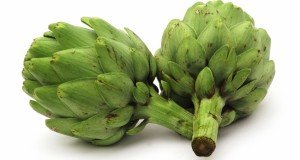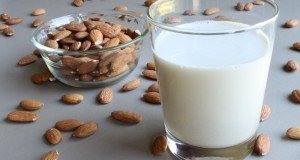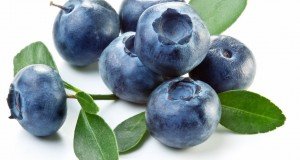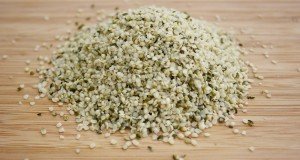How eating organic food can help combat antibiotic resistance
 (NaturalHealth365) Antibiotic resistance – marked by the rise of difficult-to-treat “superbugs” such as MRSA (Methicillin-Resistant Staphylococcus aureus) – has been labeled by the World Health Organization as an emerging global public health crisis. According to the Centers for Disease Control and Prevention (CDC) – which usually echoes the stance of the WHO in characterizing antibiotic resistance as one of the world’s “most pressing” health problems – the condition claims at least 23,000 lives every year in the United States alone.
(NaturalHealth365) Antibiotic resistance – marked by the rise of difficult-to-treat “superbugs” such as MRSA (Methicillin-Resistant Staphylococcus aureus) – has been labeled by the World Health Organization as an emerging global public health crisis. According to the Centers for Disease Control and Prevention (CDC) – which usually echoes the stance of the WHO in characterizing antibiotic resistance as one of the world’s “most pressing” health problems – the condition claims at least 23,000 lives every year in the United States alone.
According to researchers, antibiotic use in conventional farming is a major cause of this frightening phenomenon. In sharp contrast, the use of antibiotics in organic food is prohibited. Let’s take a closer look at how conventional farming practices can promote antibiotic resistance – and see why organic farming practices offer the best hope for preventing it.
Research leaves no room for doubt: Non-organic (chemical-based) farming causes antibiotic resistance
In a study published in the peer-reviewed journal Infection and Drug Resistance, the authors concluded that “the use and misuse of antibiotics in farm animal settings … has boosted … resistance among bacteria in the animal habitat.”
The scientists reported that this resistance can be transmitted to humans through various means, including food consumption.
Critics of conventional farming agree, maintaining that the poorly regulated industry has caused the emergence of antibiotic-resistant bacteria on farms. These bacteria then spread into the environment, eventually reaching consumers through food or waterways.
Scientists say a reservoir of resistant bacteria in the soil or the human gut can contribute the genetic material necessary for resistance. Resistance starts in the bacteria that normally live in the gut microbiome and then transfers to pathogens.
And here’s a frightening fact: The pathogens don’t need to be directly contacted or sprayed with antibiotics to develop antibiotic resistance. Researchers have learned that the movement of genes in bacteria is not only through “vertical gene transfer” (from parent to young) but can also be through “horizontal gene transfer” – jumping from one bacterial species to another.
According to a 2023 review, the pollution of antibiotic resistance genes (ARGs) in livestock and poultry farming environments is increasing due to the abuse of antibiotics. ARGs spread through environmental media and can transfer into the human gut microbiome via horizontal gene transfer, posing a significant threat to public health.
Lethal consequences: Antibiotic resistance is behind the rise in deadly infections
Bacteria that become resistant to commonly prescribed antibiotics can cause longer-lasting, more serious infections, leading to higher medical expenses. Even worse, antibiotic resistance can cause medications to fail to treat life-threatening infections.
Unfortunately, tetracycline and streptomycin – a pair of antibiotics commonly used in livestock and plant agriculture – also happen to be “go-to” medications for treating diseases in humans.
Tetracycline is commonly used to treat respiratory tract infections, sinus infections, and middle ear infections. It may also be used to treat more life-threatening conditions, such as anthrax, plague, and cholera.
Streptomycin is used to treat tuberculosis, plague, brucellosis, and bacterial endocarditis (an infection of the heart’s lining). Plus, according to the National Library of Medicine, both medications’ effectiveness is currently “limited by widespread resistance.”
While conventional farming uses streptomycin and tetracycline to combat diseases such as fire blight, organic farming avoids these chemicals through various practices, including choosing resistant fruit trees, properly balancing nutrients, and utilizing organic fungicides such as lime sulfur.
Antibiotics are widely used to prevent – not treat – illness in livestock
Surprisingly, most antibiotics in the United States are administered to livestock – not people.
Physicians for Social Responsibility, a non-profit group that advocates for policies that improve public health, has stated that nearly 30 million pounds of antibiotics were used in poultry and cattle production. Still, only 7.7 million pounds were used to treat human diseases.
Rather than treating acute illnesses, 90 percent of the antibiotics used in animal production are given at low levels in feed and water to prevent diseases caused by overcrowded, unsanitary conditions.
These antibiotics then end up in manure – a major source of environmental contamination.
However, organic farming requires that manure used to fertilize crops intended for human consumption be composted or introduced into the soil three to four months before harvest. This reduces concentrations of antibiotics and antibiotic-resistant microbes and helps curtail the vicious cycle of resistance.
Organic livestock production also completely prohibits the use of antibiotics for growth promotion or prophylactic (preventive) measures. If an animal is treated with antibiotics because of a medical necessity, the meat or milk can no longer be sold as organic.
Toxic glyphosate is both herbicide and antibiotic – and contributes to antibiotic resistance
Glyphosate, the active ingredient in the weed killer Roundup, is extensively sprayed on food crops such as corn and wheat. However, its manufacturer, Monsanto (now owned by Bayer), has also patented it as an antibiotic.
Glyphosate is the most widely used antibiotic in conventional agriculture – and natural health experts say it is wreaking havoc on human health.
In addition to promoting antibiotic resistance, glyphosate can disrupt the normal balance of the human gut microbiome – the community of beneficial bacteria living in the digestive tract. It is associated with a wide variety of conditions – including non-Hodgkins lymphoma, birth defects, autism, and more – and is classified by the International Agency for Research on Cancer as a “probable human carcinogen.”
An organic diet offers a range of health benefits
Crops and livestock labeled USDA-certified organic have been produced without synthetic pesticides, GMOs, antibiotics, synthetic hormones, or artificial fertilizers. Not only does organic food contain much lower levels of these toxins, but there is evidence that it may be more nutritious than conventionally farmed foods.
Several years ago, a meta-analysis published in the prestigious British Journal of Nutrition showed that organically grown crops were 48 percent less likely to test positive for cadmium, a toxic heavy metal.
In addition, organic meat and milk products have been found to contain up to 50 percent more beneficial omega-3 fatty acids, up to 20 percent more disease-fighting antioxidants, and less saturated fat.
In addition to their other benefits, organic farming practices are more humane than chemical-driven agriculture. Organic standards require that animals be kept in living conditions that accommodate their natural behavior, and access to the outdoors, fresh air, and sunlight is mandatory.
Not only organic farming can help stem the tide of dangerous antibiotic resistance, but it is also more sustainable, more humane, and yields more nutritious food. It sounds like a win/win for everyone.
Sources for this article include:











